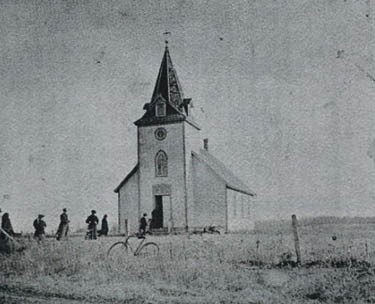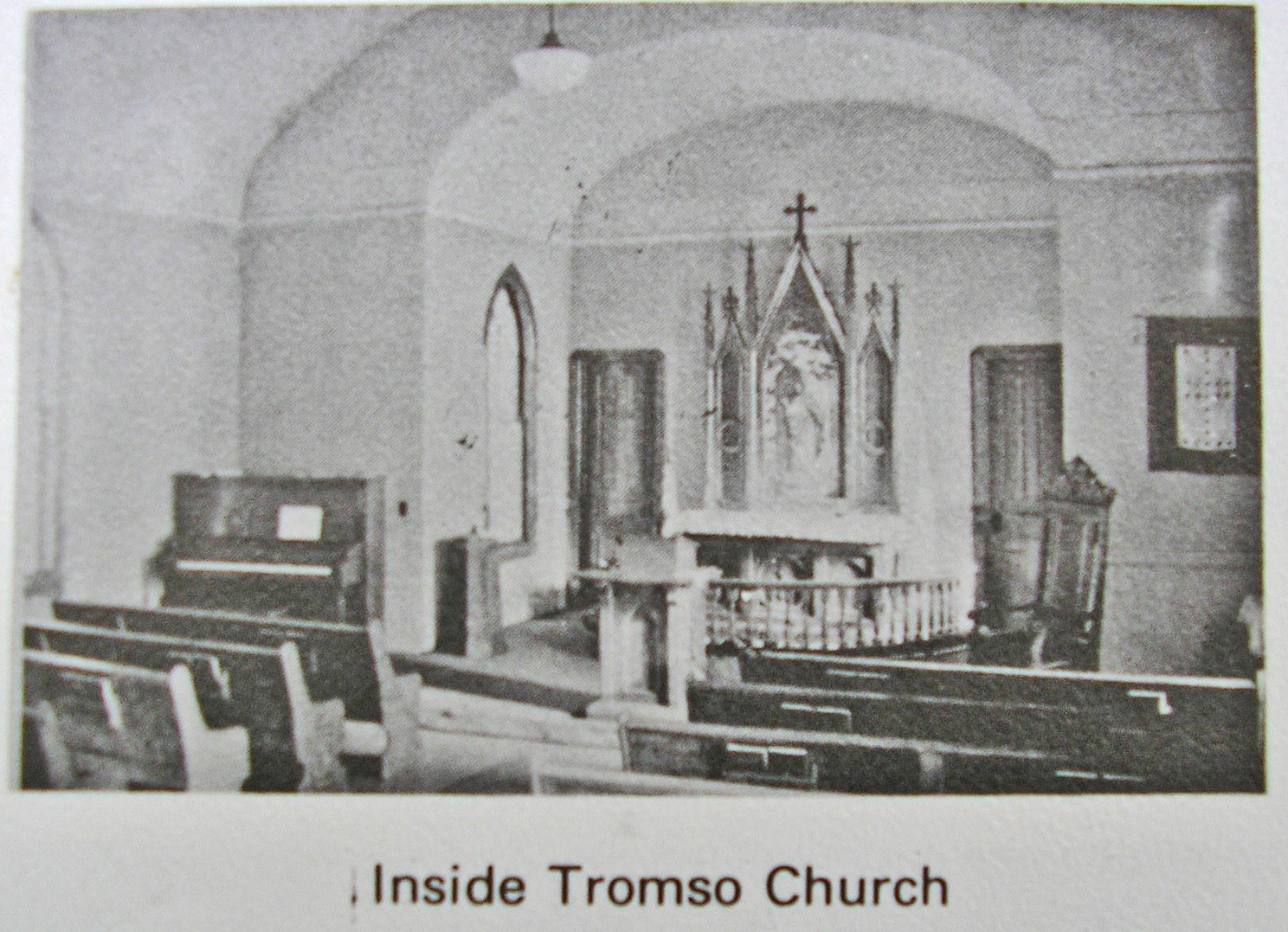
2009 by Arlan Johnson, translation by Aud Haugli
March 28 2017 posted here by Gary Gauer
In the 40 years between 1860 and 1900, over 460,000 emigrated to America from Norway whose population in 1875 was less then 2 million. Many of those that came to the Lake Lillian community in the southeast corner of Kandiyohi County in Minnesota were farmer/fishermen from Balsfjord, Ullsfjord and the Lyngen areas in Troms fylke, Norway. Both of the ethnic groups, the Sami and Kven were gradually assimilated into the Norwegian population through marriage and change of lifestyle. This was the case for many of the Norwegian families that settled in the Lake Lillian community from the 1860’s to the 1890’s, including Erik Joseph Larsen, and the Mathiasen and Solomonsen families. In their effort to assimilate, much of the heritage was hidden and lost by not passing that information to the next generation. Those people with Sami heritage were at times referred to as “Finn” which was a derogatory term.
Why did these people choose to leave their home and families in Norway to go to the undeveloped areas of Minnesota to begin to farm on the new land? They left the mountains, valleys and fjords of Norway for the open prairies of Minnesota where there were no roads or buildings. They left the summers that were light all night and winters that were dark all day to Minnesota which is at 45 degrees north latitude. They left the fjords where fish were a source of food and income to Minnesota that had many small lakes with fish. Names were changed to English spelling; “sen” was changed to “son”, Johan became John, Maria became Mary, wives and children took their husband and father’s last name, and married women took their husband’s last name, etc.
There was an opportunity for new land. In 1862 the Homestead Act was passed and a settler could get up to 160 acres (64 hectare) of land if they would live on the land for 5 years, build a house and grow crops. After the conflicts with American Indians stopped in 1862 and Indians were removed from the area it was safer for the settlers to move into central Minnesota. However, this would not be easy because they came with no farm machinery, horses or oxen to plow the new land with thick sod (grastorv) and deep black soil. A house and barn would have to be built.
Many of the families that came to Lake Lillian from Troms in Norway had been dissenters from the state church including in 1860 Erik Joseph Larsen and his first wife, Ingeborg Johnsdatter, and some people from the Solomonsen and Mathiasen families. The Free Apostolic Church in Norway was the first group to break away from the State church in the North and it became an important part of Northern opposition religion. Many of these followers were Sami and Kven. They denounced child baptism and the holy supper. Pastor Gustav Adolph Lammers (1802 - 1878) broke with the state church and came to Tromsø in 1857 and stayed about a year. The Free Congregation of Ullsfjord was formed. The fact that Lammers spent a year in the north shows the importance of these congregations and the role they might play in furthering the growth of the movement. Lammers later returned to the state church as did some of the dissenters.
As time went on with the settlers in Minnesota, the need for a Christian congregation developed. The pioneers walked or drove by oxen and wagon to Willmar, the Kandiyohi County center, a distance of about 20 miles (30 kilo meters) to attend church and partake of the Lord’s Supper (nadverden?). The need for a place of worship in the community became evident. Erik Joseph Larsen talked with Rev. Paulson in Willmar about the possibility of forming a congregation in the Lake Lillian community. After some investigation the Rev. Kleven was sent to see what could be done. On August 16, 1885, a few families met at the Erik Larsen home and under the direction of Rev. Kleven, Tromsø Lutheran Church was organized. The name Tromsø was chosen because it was the city close to where at least 24 of the original members had lived.
Early Photo of


The congregation accepted the norsk evangelisk lutherske symbolical books. There were 36 original members and Erik Joseph Larsen was elected the Formand. Because so many of the early members were of Sami ancestry the church was some times called by the negative word, the “Finn church” by others in the community.
A church building was begun in 1885 but was not completed for ten years. Erik Larsen died in 1891 so he did not live to see the church building completed and the congregation become established. As years past the original Norwegian speaking members died. In the 1920’s English was used for some of the worship services but later only English was used. It was not until 1929 that Tromsø Lutheran Church had the first American born pastor. Until then all the worship was in Norwegian. The children were the first to learn English in the schools. If the children spoke Norwegian in school they were often punished. The younger children in a family would learn English from their older siblings. There were probably several adults that did not learn to speak English but others wanted to learn English and become “American”.
The congregation was first affiliated the Norwegian Lutheran Conference and later with the Lutheran Free Church Synod. In 1946 a new church was built in the village of Lake Lillian and the congregation was renamed Grace Lutheran Church. Now it is part of the Evangelical Lutheran Church in America Synod. As years past, the population of the area declined. This is a farming community and the farms became larger and did not require as many workers. The children would move from the area to larger towns and cities to work. Grace Lutheran Church had fewer members as people moved from the community. There was another Lutheran Church in the community that was organized by Swedish settlers years ago and these two congregations have now merged. A few descendants of the original families are still part of this congregation. There may be thousands of descendants from these families still living in Minnesota and throughout America. The church cemetery is still being used and the name was changed to Tromsø Memorial Cemetery.
The following information about 24 of the original members has been located in Norway records on the internet, Kandiyohi County records and Tromsø Lutheran Church in Minnesota records. Other original members may also have been from Troms but more information could not be located. Some are known to have moved from the community. Some settlers would spend a few years in the community and then moved from the Lake Lillian area after Tromsø Lutheran Church was organized.
They came to Minnesota in 1864 and homesteaded in the Lake Lillian community in Kandiyohi County in 1866. Ingeborg died in 1876. Erik’s daughter, Mary Elinne Larsen, born in 1867, was an original member of Tromsø Lutheran Church. She was the only original member that was known to have been born in Minnesota. Erik married Alette Bergithe Mathisdatter, the daughter of Mathias Henrik Mathiasen and Ane Bergitte Jonsdatter in 1877. She was born in 1862 at Bredvik and she emigrated to the Lake Lillian community with her parents about 1877.
Ole Mikkel Salomonsen was the son of Salomon Salomonsen, the elder, and Elen Marie Hansdatter (Solomonsen). Salomon dissented from the State church for a few years. Some of their children were not baptized as babies but the children were baptized later. Elen Marie Hansdatter (Solomonsen) was born in 1827 in Lax Elv, Karlsøy Parish in 1827 and immigrated to Lake Lillian in 1883. Her husband died in 1878. Another son, Solomon Solomonsen, the younger, emigrated in 1882 and married Mary Elinne Larsen, the daughter of Erik Larsen in 1885, the first marriage in the Tromsø Lutheran Church records. They had 13 children baptized at Tromsø Lutheran Church. Mary (Larsen) Solomonsen, the last original member of the congregation died in 1944 and her funeral was the last one in the old Tromsø Lutheran Church building.
It is possible that there are still relatives of these people living in Troms and throughout Norway. Erik Joseph Larsen’s sister, Ellen Johanna Petrikke Olsdatter, married to Anders Pedersen and lived at Stordalen and there are many descendants in Troms and throughout Norway. Erik Joseph Larsen’s father, Ole Lars Eriksen, had a brother, Joseph Eriksen who died in 1893 at Storstennæs and he had descendants in Troms. In the 1900 census his son, Sivert Josefsen was also on Storstennæs with his family. In the 1976 Lyngen Bygdebok it shows that Sivert Josephsen got the farm from Joseph Eriksen in 1889. In 1966 the farm went from Ingvald Storsteinnes to Inge Storsteinnes. Is this family still in Troms? Also, in the 1900 census Joseph Eriksen’s daughter, Anne Josefsen was at Bredvik with husband, Samuel Pedersen and children. Is this family still in Troms?
If there is any information about any of the people in this article, please contact the author.
Thank you to Aud Haugli for translation.
johnsap@pressenter.com